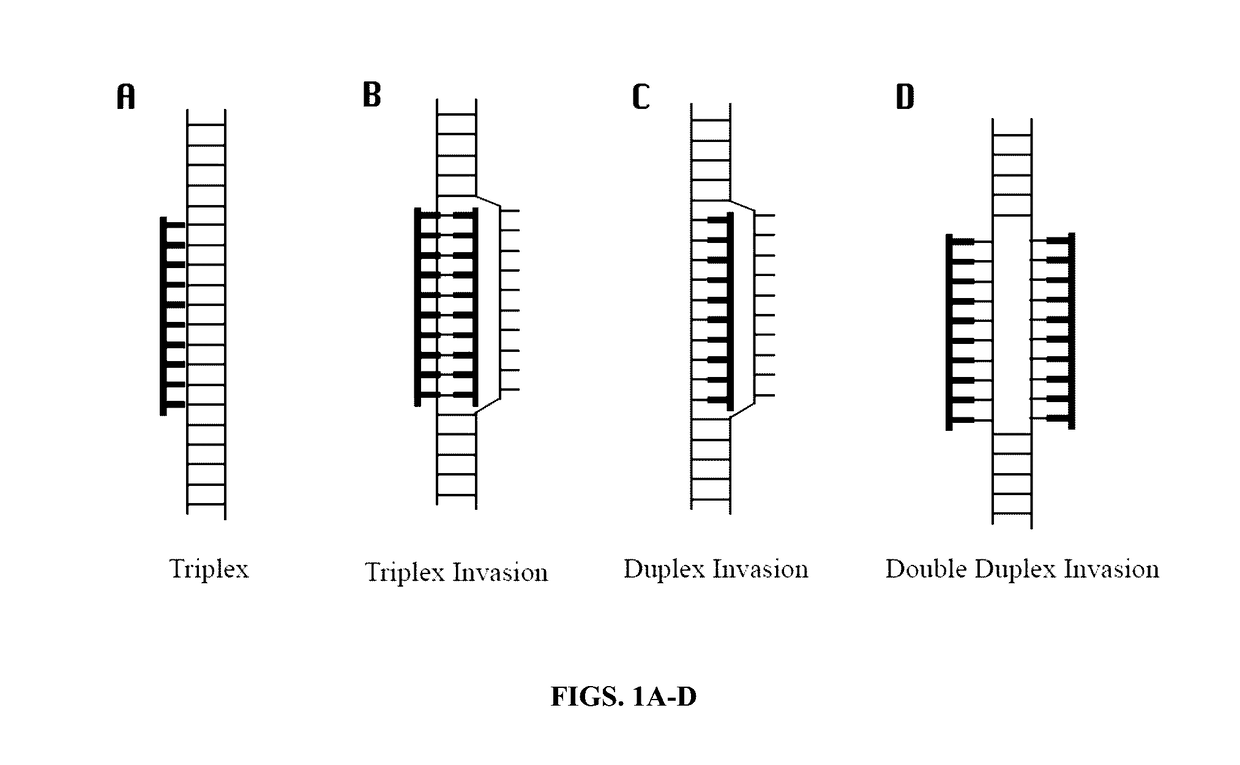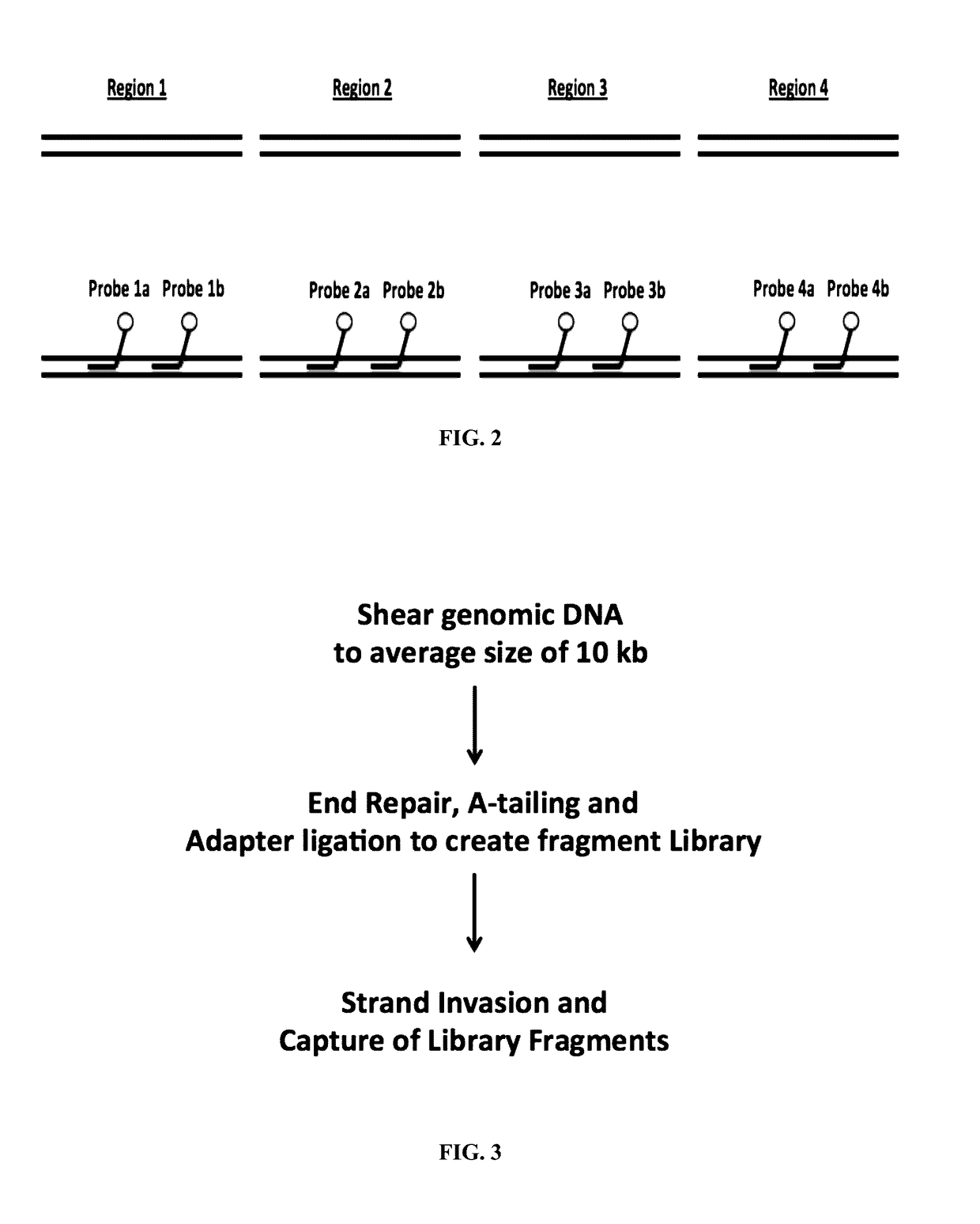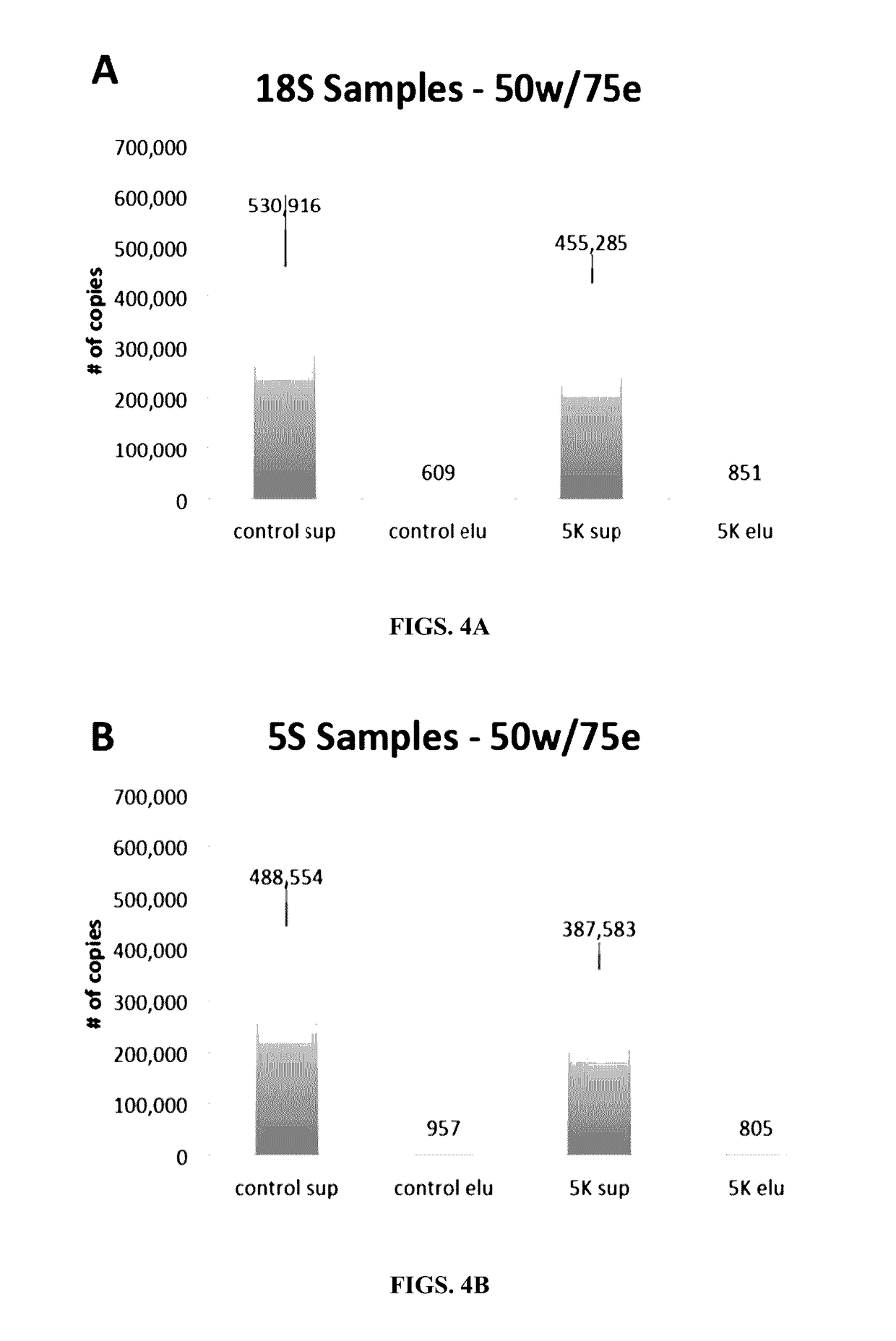Methods and compositions for genomic target enrichment and selective DNA sequencing
a technology of applied in the field of methods and compositions for selective dna sequencing and genomic target enrichment, can solve the problems of difficult to isolate specific dna target sequences from long, difficult to achieve dna capture, and time-consuming fosmid cloning
- Summary
- Abstract
- Description
- Claims
- Application Information
AI Technical Summary
Benefits of technology
Problems solved by technology
Method used
Image
Examples
example 1
Use of Two Biotinylated PCR Primers Mediates Capture of 99% of a Long, Double-Stranded PCR Product
[0559]The ability of a covalently-bound biotin hapten to mediate capture of very long DNA molecules was evaluated. Since the binding capacity of streptavidin-coated magnetic beads is limited, a single biotin residue per DNA molecule may not be sufficient to compete with free biotinylated probes.
[0560]To evaluate the capture of biotinylated PCR products, based on the use of one or more biotinylated PCR primers, a single biotinylated PCR primer was used to capture a long, double-stranded PCR product 3,581 base pairs in length in the presence of 0.5 μM biotinylated probe competitor. The experiment was also carried out using two biotinylated PCR primers. DNA material remaining in supernatant after capture of biotinylated PCR products was visualized and quantified on an agarose gel.
[0561]Materials and Methods
[0562]Two different biotinylated DNA targets were produced via PCR amplification of ...
example 2
PNA Probes with Gamma Modifications of the PNA Backbone Capture Long, Double-Stranded DNA
[0566]The ability of PNA probes including gamma modifications of the PNA backbone to mediate capture of very long DNA molecules was evaluated. DNA material remaining in supernatant after strand invasion and capture of target DNA with one or two biotinylated PNA probes, each 20 bases long, that contain 6 gamma-Lysine modifications and 1 gamma Mini-PEG modification was visualized and quantified on an agarose gel.
[0567]Materials and Methods
[0568]Strand invasion reactions consisted of 100 ng of 11,970 bp DNA target (PCR product capturing a genomic region that contains the human CCR5 gene), 375 ng of Lambda / HindIII nontarget DNA, 2 μM single-stranded DNA binding protein (SSB), 20 mM Tris-HCl pH 8.0, 20 mM NaCl, 0.1 mM EDTA, and 0.4 μM PNA(s). Controls (Cont.) contained no PNA or SSB. Reactions were incubated at 46° C. for 4 hours, then 55° C. for 5 minutes. To separate DNA from free PNA probe the rea...
example 3
A Single Target Gene can be Captured from a Preparation of Genomic DNA with an Average Size of 10 kb
[0573]Capture of long, double stranded DNA by strand-invading PNA probes was utilized to isolate DNA segments of interest from total genomic DNA. An experiment was carried out to determine whether a genomic region containing the CCR5 gene can be captured from a preparation of genomic DNA with an average size of 10 kb.
[0574]Materials and Methods
[0575]A single PNA probe 20 bases long containing 6 gamma-Lysine modifications and 1 gamma Mini-PEG modification was used. Semi-quantitative PCR was carried out using sheared genomic DNA captured by one PNA probe as template. 3 μg of human genomic DNA (Coriell #NA23248) was sheared to an average size of 10 kb using the Covaris g-TUBE™. Sheared genomic DNA was combined with 2 μM single-strand binding protein (SSB), 20 mM Tris-HCl pH 8.0, 20 mM NaCl, 0.1 mM EDTA and 0.4 μM CCR 6K PNA and incubated at 46° C. for four hours, followed by 55° C. for 5...
PUM
| Property | Measurement | Unit |
|---|---|---|
| Fraction | aaaaa | aaaaa |
| Fraction | aaaaa | aaaaa |
| Fraction | aaaaa | aaaaa |
Abstract
Description
Claims
Application Information
 Login to View More
Login to View More - R&D
- Intellectual Property
- Life Sciences
- Materials
- Tech Scout
- Unparalleled Data Quality
- Higher Quality Content
- 60% Fewer Hallucinations
Browse by: Latest US Patents, China's latest patents, Technical Efficacy Thesaurus, Application Domain, Technology Topic, Popular Technical Reports.
© 2025 PatSnap. All rights reserved.Legal|Privacy policy|Modern Slavery Act Transparency Statement|Sitemap|About US| Contact US: help@patsnap.com



